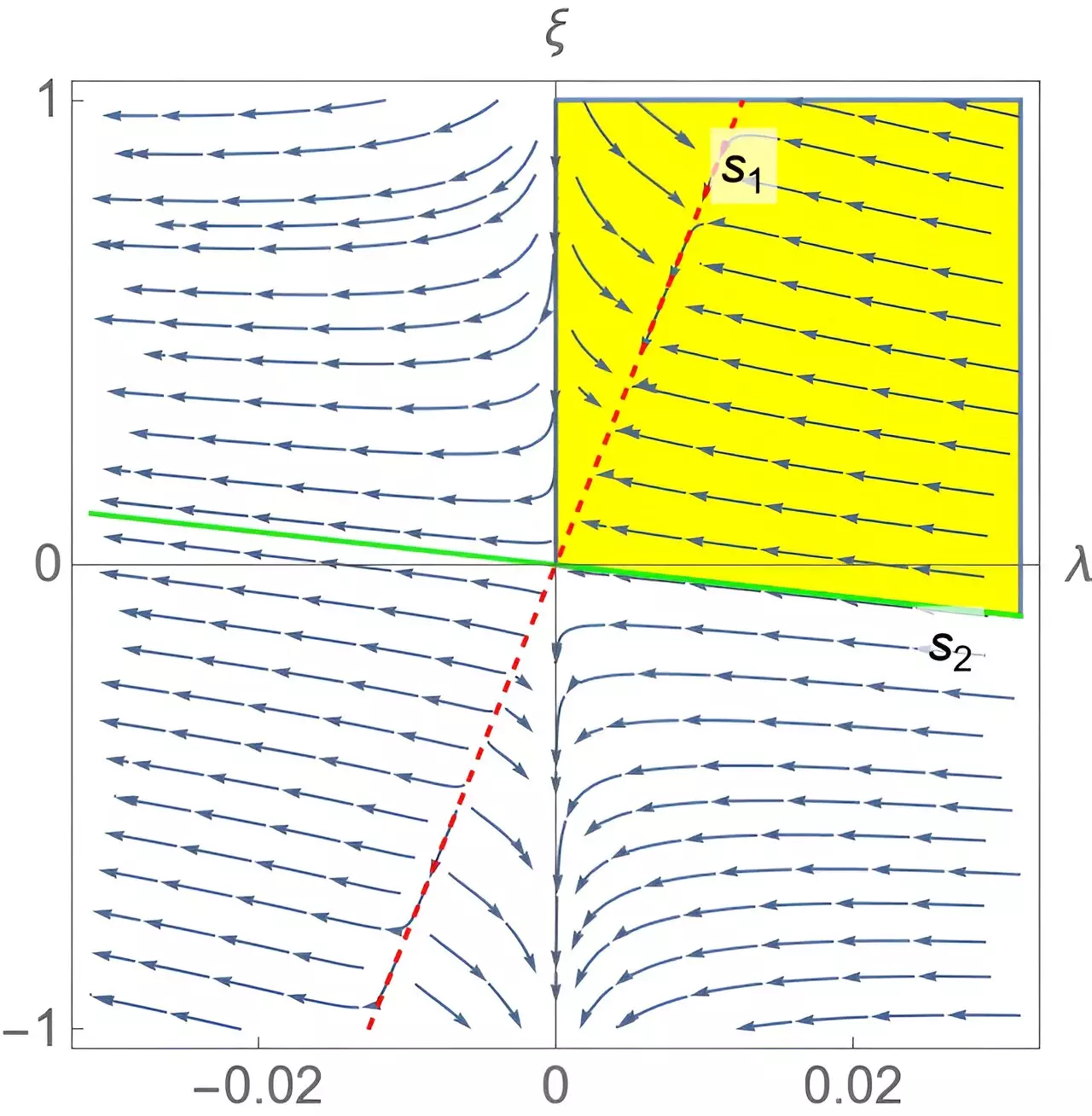In a compelling move towards unraveling one of the universe’s greatest mysteries, a collaborative team of researchers from the International School for Advanced Studies in Trieste, the University of Massachusetts, and Brazil’s Instituto de Física Teórica at Universidade Estadual Paulista has ventured into the nuanced field of quadratic gravity. Published in Physical Review Letters, their pioneering work aims to redefine our comprehension of gravitational phenomena through innovative beta functions that probe the running of coupling constants in this advanced theoretical framework. Their work represents not merely a series of calculations but a substantial step toward addressing the most pressing challenges in both classical and quantum gravity.
The fundamental premise of quadratic gravity expands upon Einstein’s revered theory of general relativity by integrating additional curvature terms into the Einstein-Hilbert action. This mathematical extension intends to deliver answers to gravitational behaviors that traditional theories have struggled to define. With the input of co-author John Donoghue, the significance of their work becomes evident: quadratic gravity is a promising candidate for describing gravitational forces across various scales. By developing a deeper understanding of the running of coupling constants—essential for evaluating how interactions evolve under quantum fluctuations—the team hopes to illuminate previously obscure gravitational dynamics.
Deciphering the Complex Nature of Coupling Constants
Move over generalized formulations; this new research aims to unwrap the intricate tapestry of coupling constants and their behaviors under fluctuating energy scales. The impetus behind the exploration stems from the notion that as the quantum amplitude’s energy shifts, the corresponding physical coupling constants must adjust accordingly. This process, known as the running of coupling constants, reveals essential characteristics of the underlying theoretical structure.
Donoghue elaborates on this by noting the variances in methodologies that researchers have employed in the past to articulate this running. While existing techniques often converge on similar conclusions, the landscape becomes murky in the realm of quadratic gravity, where inconsistencies have emerged. The introduction of new analytical tools by this team marks an important milestone in correcting these discrepancies, thereby refining our theoretical understanding of gravitational influence at high energies.
New Insights with Beta Functions
The essence of the researchers’ contributions can be encapsulated in the beta functions developed to characterize the running of couplings within quadratic gravity. Functionally, beta functions serve as indicators of how quantum field theories evolve from one energy scale to another, thus yielding invaluable insights into the high-energy behavior of the theory itself. Co-author Gabriel Menezes emphasizes this profound aspect, noting that the understanding of beta functions extends beyond mathematical interest; it opens pathways to comprehend how theories behave under extreme conditions.
One of the paramount consequences of their findings is the suggestion that couplings in quadratic gravity can diminish to increasingly negligible values at high energies. This introduces the alluring possibility of asymptotic freedom—where particle interactions grow weaker rather than spiral into unstable behavior—contrasting sharply with other gravitational models that may exhibit runaway coupling constants or lead to unmanageable conditions.
Quadratic Gravity’s Promise for the Future
The implications of this discovery extend far beyond theoretical musings; the findings position quadratic gravity as a credible contender for a holistic quantum theory of gravity. The revelations presented by Donoghue and his collaborators suggest that the peculiarities inherent in quadratic gravity warrant further investigation. This research posits that, contrary to prior assumptions, the landscape of quantum gravity could indeed harbor stable conditions, an attractive feature for theorists aiming for a comprehensive understanding.
Moreover, the methodologies developed in this groundbreaking study could inspire future explorations in gravitational phenomena, leading to a richer exploration of other types of quantum gravity theories. The enthusiasm surrounding this potential cannot be overstated; the idea that this body of work might catalyze a paradigm shift in theoretical physics is exhilarating.
Menezes reaffirms this sentiment by noting that a deeper grasp of scattering amplitudes and cross-sections could herald a major breakthrough, not just for quadratic gravity but for the entire field of gravitational physics. As our quest for unveiling the cosmos intensifies, this innovative research may become a cornerstone in our efforts to grasp the fabric of the universe.
With such promising advances, the work of these researchers not only challenges existing paradigms but also provides a springboard for future inquiry, paving the way for a deeper understanding of not just gravity but the fundamental nature of the universe itself.

